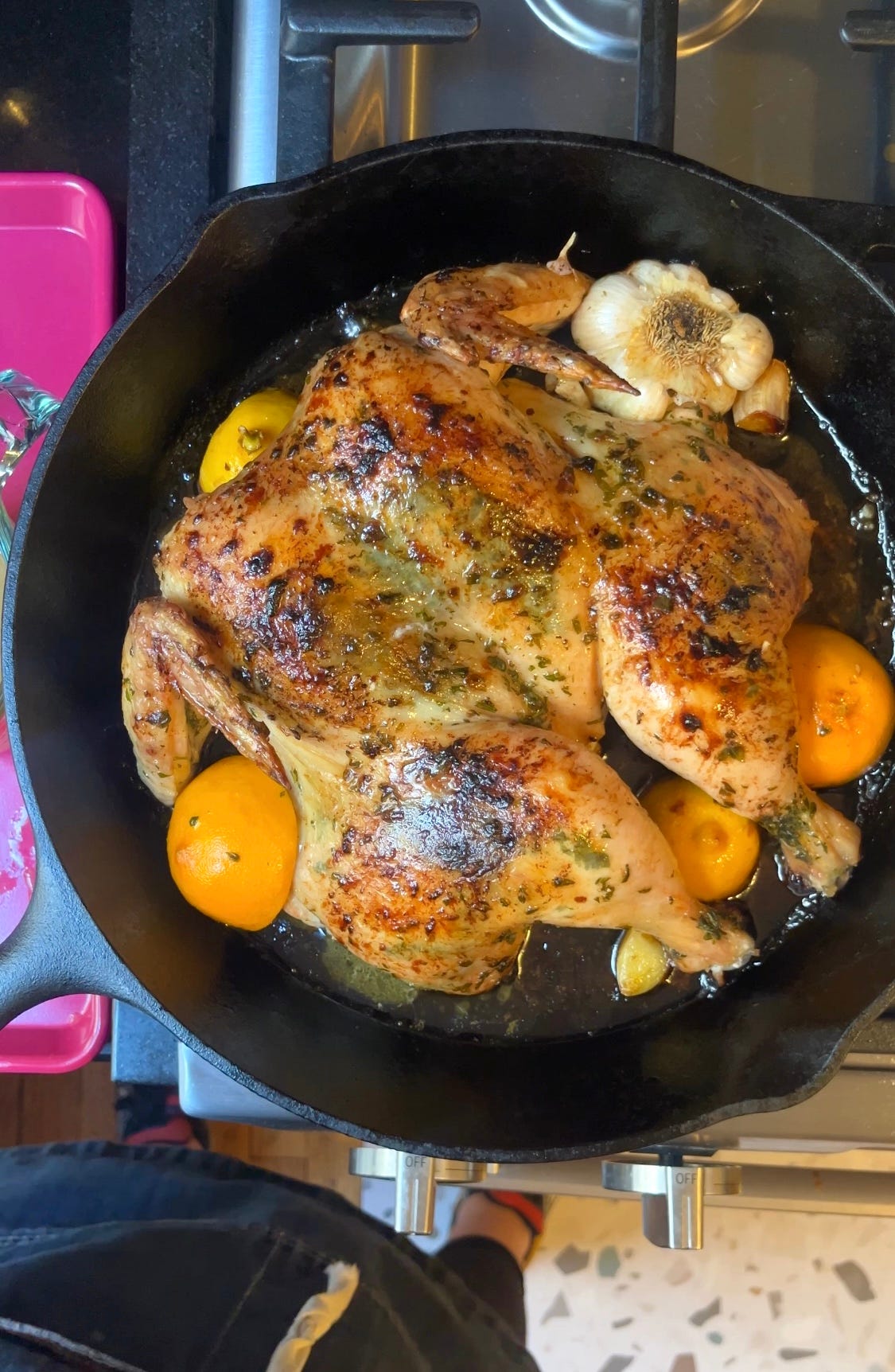Tarragon Chicken with a Lemony Pan Sauce
But first, we make green bean jello.
Thanks for reading! If you enjoyed this post, head to the bottom of the page to like or comment so others can find it.
A recurring feature in Gourmet Magazines is a section called Gourmet Menus, which feature a full day’s worth of menus, typically unified very loosely around a theme. In February 1975, the theme was Trays Élégant, highlighting fancy trays to carry and/or present the food on. The feature doesn’t mention much, but I wonder if the trays were a way to elevate TV dinners or weekend brunch.
This recipe comes from the dinner portion of the feature, and while a Tarragon Roasted Chicken is a fairly simple and classic dish, it was the Green Bean Timbales that were served on the side that caught our eye.
My friend Dani came over to help me with this recipe, and neither of us had ever heard of a timbale. According to the internet, a timbale is “either a kind of pan used for baking, or the food that is cooked inside such a pan.” That description almost makes it seem like anything can be a timbale if you tried hard enough.
The pans that are used to bake a panettone are a timbale. Bundt pans, angelfood cake pans, and springform pans are not timbales, but you can substitute a “purpose-made” timbale bakeware, thus maybe making them maybe timables? Timbales are sometimes steamed or baked in a water bath, but not always.
A dish can also be a timbale if it is completely enclosed in a crust (pastry sheets, slices of bread or vegetables, rice). The most common timbale recipe I found was for Timballo di Melanzana, a dish that consists of fillings enclosed in sheets of eggplant. I saw a reference for Sartu di Riso, which almost seems like an Italian rice ball but shaped in the form of a cake.
The green bean timbale recipe was of the former variety: something cooked in a particular vessel, and in this case, steamed in a water bath. I don’t have small timbale dishes, so we used small ramekins, which is close enough for government work.
The ingredients for this side dish were very normal on paper: green beans, peas, shallots, and butter. But after a lengthy process of steaming, sautéing, and blending the ingredients together, the result resembled a deeply savory green bean juice, but warm. After their steam bath, the filling didn’t actually set that much: enough to just take shape, but not enough to make it resemble anything other than baby food.
Every step of the way, it was like a trompe-l'œil, but with smell. I knew the ingredients were good. And if I closed my eyes, it reminded me of a Thanksgiving side dish. But as we swiped our spoons through the warm, jiggly mounds, we couldn’t help but think we’d just cooked up some accidental jello.
We recreated the green bean timbales for science. I truly do not recommend their consumption, so their recipe will not be included here.*
My Tarragon Chicken recipe is a bit more polished than what was printed, but it doesn’t stray too far from the original. I used a bit more butter and lemon to make a delightful pan sauce that would be great over orzo or roasted potatoes. And instead of a side car of green bean jello, sautéed vegetables or a green salad would be a nice green counterpoint.
*I bet if we ask nicely, Food is Stupid would actually make green bean jello for us.
Tarragon Chicken with a Lemony Pan Sauce
Keep reading with a 7-day free trial
Subscribe to on hand | a food & drink newsletter to keep reading this post and get 7 days of free access to the full post archives.





